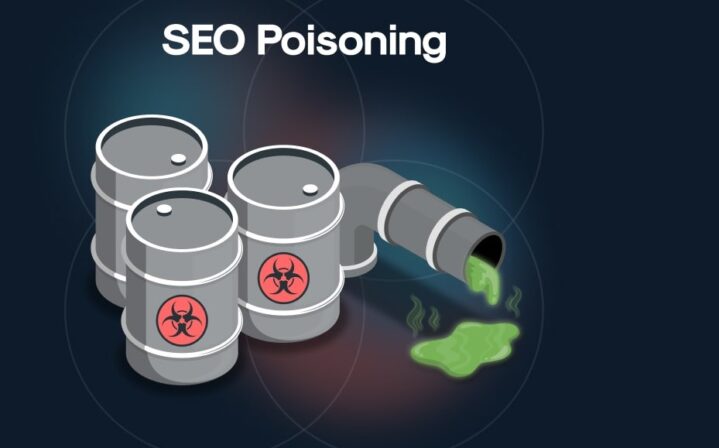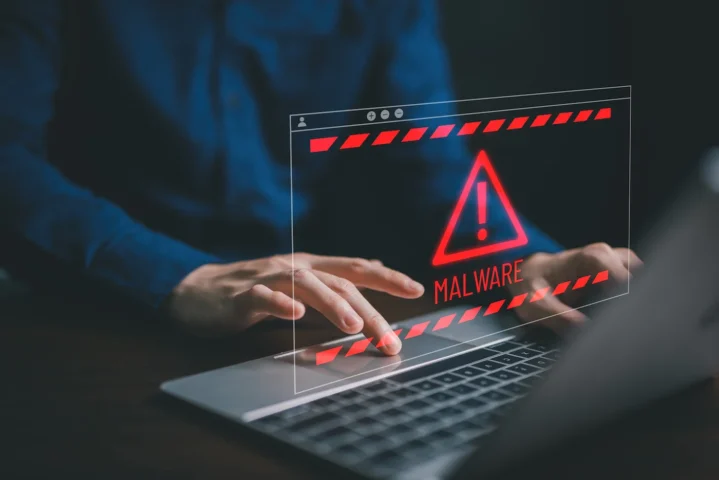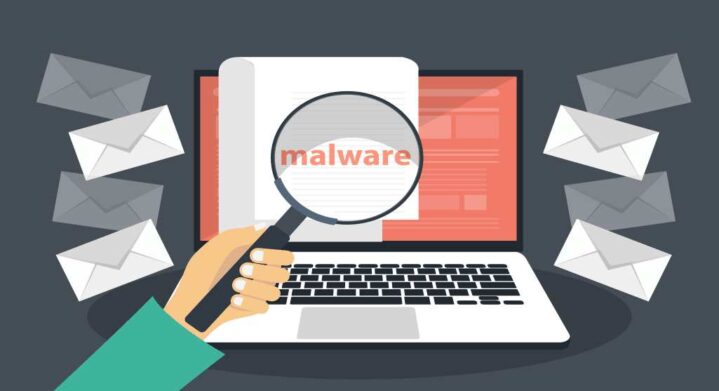Search engines are now a key component of our online information access in the digital age. Search engines have become a prime target for cybercriminals as millions of people look to them for answers. SEO poisoning is among the most advanced and risky techniques used by attackers. Often evading conventional cybersecurity protections, this strategy uses search engine results to guide people to harmful sites. Understanding SEO poisoning strategies, their effects, and how to protect against them becomes more important as people and companies keep depending on search engines.
What is SEO Poisoning?

Cybercriminals utilize SEO poisoning to skew search engine rankings. Attackers might entice people to harmful websites by deliberately optimizing them to rank higher in search results. Once there, consumers could run into several cyber hazards such as virus downloads, phishing attempts, or credential theft.
SEO poisoning’s fundamental concept is to exploit the confidence individuals have in search engines. Attackers take use of this assumption by generating phony material as consumers usually think the top-ranking sites in search results are reliable. Though meant to steal data or spread dangerous malware, these pages could seem real at first look.
How SEO Poisoning Works
SEO poisoning involves multiple techniques that exploit search engine algorithms to boost the ranking of malicious websites. Below, we will explore some of the most common SEO poisoning tactics used by attackers.
1. Malicious Content Keyword Stuffing

Keyword stuffing is among the most popular techniques fraudsters employ. Using this approach, attackers add high-volume, trending, or pertinent keywords to their harmful content in order to raise the search engine position of their website. For example, if a popular product or service is in great demand, fraudsters might build a phony page that reflects the description of the product or service but includes concealed connections to malware.
These harmful sites have a larger possibility of showing high in search results as search engines grade sites depending on keyword relevancy, hence attracting naive people who click on them.
2. URL Control
Cybercriminals frequently utilize URL manipulation to trick people into visiting dangerous sites. They might build domains that closely mimic legal ones, leading consumers to think they are accessing a reliable site. With just a little modification, such as an additional character or a misspelled word, these URLs could seem identical to a well-known website.
Many security systems depend on a recognized list of dangerous sites to block threats, therefore, this approach is very successful. Attackers can circumvent these protections by slightly changing the domain name, hence complicating the detection of the danger by cybersecurity software.
3. Cloaking and Content Injection
Cloaking is a method whereby cybercriminals provide search engines and ordinary users with alternative material. A website’s content, created to rank well in search results, is what a search engine sees as it crawls it. But, if people go to the website, they are confronted with harmful material,perhaps including phishing forms, ransomware, or malware.
Likewise, content injection lets hackers change a legitimate website to run harmful material. Security holes in the website could let this material be injected. Once these pages are optimized using SEO strategies, they can seem authentic to both search engines and visitors, hence complicating the identification of the harmful activity.
4. Leveraging Social Media for SEO Poisoning

Many SEO poisoning attacks depend on social media to create extra traffic. On social networking sites, where these links draw more attention and traffic, attackers could post malicious links. Search engine rankings are influenced by social media signals including shares, comments, and likes. A hazardous link could seem higher in search results if it has notable social media engagement, therefore raising the likelihood of users clicking on the malicious link.
Users frequently trust social media channels and their peer relationships, therefore this approach increases the reach of the contaminated material. So, individuals might be more inclined to click on links shared by friends, colleagues, or influencers, so unwittingly guiding them to harmful sites.
5. Fake Reviews and Testimonials
Creating phony reviews and testimonials to boost the credibility of their harmful websites is another strategy used by cybercriminals in SEO poisoning. Positive evaluations on reliable sites, whether social media channels or product review sites, can persuade users that the site is real. Users are more likely to believe the site and go to it if they see positive ratings or reviews.
Often, these evaluations are fake and used to increase the rating of the harmful website in search engine results by making it seem more legitimate and trustworthy. Once people access the website, they could run into phishing assaults meant to steal their personal information or malicious malware.
Difficulties in Spotting SEO Poisoning Attacks
Because it usually depends on altering search engine algorithms rather than using software flaws, spotting SEO poisoning is difficult. Many conventional cybersecurity methods, including URL blacklists or heuristic-based tools, emphasize identifying known harmful domains or malware, which might not be enough in the case of SEO poisoning.
Cloaking or content injection strategies let cybercriminals make harmful websites appear clean and authentic to users as well as search engines. Because these assaults don’t usually depend on exploiting security flaws in the conventional sense, they could escape attention by conventional security measures, hence complicating detection and prevention.
VMRay’s Part in Finding SEO Poisoning Attacks

A major supplier of sophisticated malware analysis tools, VMRay is important in spotting and stopping SEO poisoning attempts. Its dynamic analysis tools let companies examine URLs, files, and websites in real-time to find hidden dangers. It enables security experts to find SEO poisoning strategies that might elude conventional security systems by means of its capacity to expose malware, phishing efforts, and other cyber dangers.
VMRay can determine whether a website is trying to distribute malware or participate in questionable activities by looking at its behavior during visit. VMRay’s sophisticated detection algorithms are also meant to identify both known and new dangers, thereby enabling it to be a very useful tool for protecting against changing SEO poisoning strategies.
Avoiding SEO Poisoning: Best Practices and Remedies
Although spotting SEO poisoning assaults can be difficult, companies and people can take several actions to safeguard themselves against these dangers. Following these guidelines can help people and companies to lower their chances of being victims of SEO poisoning.
1. Keep Systems Up to Date
Regularly updating software and systems is a basic yet vital first step in protecting from SEO poisoning. Many attackers exploit known vulnerabilities in outdated systems to place malicious content on websites. Maintaining systems and software up to date with the latest patches and security upgrades helps you to reduce the probability of becoming a target for such attacks.
2. Implement Web Filtering Solutions
Web filtering tools stop people from going to recognized dangerous websites. These technologies monitor URLs in real-time to ensure that even if they rank high in search engine results, users are not led to unsafe websites. By banning known hazardous domains, web filtering systems can prevent users from clicking on tainted links, therefore protecting them against SEO poisoning attacks.
3. Use Anti-Malware Software

Anti-malware programs let one find and remove harmful content perhaps found through corrupted search engine results. By scanning downloads, URLs, and websites, these programs can identify dangerous files or code. Conducting comprehensive security scans enables businesses and individuals to locate and delete malware before it can harm..
4. Teach Users Cybersecurity Best Practices
Teaching people to identify dubious websites and links helps them to protect against SEO poisoning more than almost anything else. Reducing the risk of SEO poisoning can be greatly aided by training staff members or users to examine search results, confirm URLs, and refrain from clicking on unknown links. Users should also be inspired to notify IT departments or security experts any questionable links or conduct.
5. Use machine learning and artificial intelligence tools
Artificial intelligence and machine learning-powered security tools can help detect and halt SEO poisoning efforts by analyzing great volumes of data and spotting unusual behavior. These tools can detect anomalies or strange patterns in search engine ranks, user behavior, and website content. By tracking behavior and utilizing machine learning to identify probable hazards, organizations can stay one step ahead of criminals and lower early risks.
Last recommendations
SEO poisoning presents a growing threat to businesses and individuals both as con artists continue developing ever more sophisticated techniques to exploit search engines and skew search results. These attacks use techniques including keyword stuffing, cloaking, fake reviews, and social media manipulation to deceive users into visiting dangerous sites. Conventional cybersecurity regulations make it difficult to identify these attacks, hence organizations must rely on more advanced threat detection techniques.
Maintaining systems current, using web filtering tools, implementing anti-malware measures, educating users, and adopting artificial intelligence-driven protection help businesses and individuals reduce their vulnerability to SEO poisoning attacks. Defending against these sophisticated assaults requires on awareness and vigilance as con artists alter their techniques.
